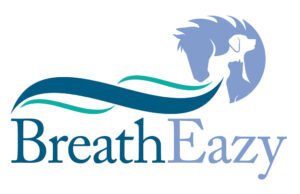Effects of low-dust forage on dust exposure, airway cytology, and plasma omega-3 concentrations in Thoroughbred racehorse: A randomised clinical trial
Background information
Racehorses commonly develop evidence of mild equine asthma in response to dust exposure. This is a performance-limiting disease, however, they have an unusually high dust exposure throughout their lives compared to other horse populations, as they spend approximately 23 hours a day in their stable and are fed dry hay throughout. Compared with horses out at pasture, racehorses are exposed to much higher quantities of organic dust which contain endotoxins and beta-glucans derived from bacteria and fungi.
Specialised pro-resolving mediators (SPM) play an important role in the return of tissue homeostasis after an inflammatory event. SPMs are derived from essential omega-3 and omega-6 polyunsaturated fats (PUFAs) and the availability of these is determined by dietary intake. Unfortunately, dry hay, which is typically fed to racehorses, has a lower omega-3 content than haylage or pasture grass.
It is thought that increased omega-3 intake might help mitigate airway inflammation in horses with severe asthma, and therefore the authors of this study hypothesised that feeding haylage would increase the plasma concentrations of omega-3 and SPMs, thus speeding up the resolution of airway inflammation. They also hypothesised that the feeding of haylage and steamed hay would reduce breathing-zone measures of respirable dust, beta-glucan and endotoxin, and would lower BALF proportion so of neutrophils and mast cells.
What is equine asthma?
Equine asthma is characterised by airway inflammation, hyperresponsiveness, and increased mucus production, which results in chronic coughing. This inflammation is usually in response to inhaled airborne particles such as dust, spores, pollens etc. Equine asthma can have a debilitating effect on performance in sport and racehorses and can sometimes take a long time to resolve with the risk of repeated episodes seasonally.
Clinical signs of equine asthma include coughing, nasal discharge, increased respiratory rate, increased respiratory effort, wheezing and poor performance. Typically, equine asthma is associated with increased stabling in poorly ventilated barns with dusty bedding and hay. This is more likely to affect horses in the winter or on long periods of box rest due to injury, however, summer-pasture-associated equine asthma affects horses in the summer due to seasonal pollens. Reducing exposure to allergens helps manage clinical signs but medical management through the use of equine inhalers or equine nebulisers is often needed in addition.
What do we know so far about low-dust forage?
Options to reduce the dust racehorses are exposed to via their forage include feeding haylage which has a much higher moisture content. Haylage can reduce respirable dust by 60-70% compared to dry hay. Another method of dust reduction is by steaming the hay, this also reduces the bacterial and mould content by 99%, and dust by 95% in vitro.
What do we not know about low-dust forage?
Outside of the laboratory, the true efficacy of low-dust forages to reduce dust exposure and airway inflammation remains unknown. Little is also known about how much haylage affects the plasma omega-3 concentration compared to dry hay, and whether this does have a real effect on targeting airway inflammation.
Study Design
The study was a prospective, randomised feed trial. The study population was made up of 43 racehorses enrolled by their trainers with no signs of current respiratory infection or systemic illness. 12 horses re-enrolled once (they were allowed to re-enrol if they hadn’t been assigned haylage previously), and 9 horses re-enrolled twice. The horses were randomly allocated to receive dry hay, haylage or steamed hay as their only source of forage for 6 weeks. The horses’ hard feed was not changed throughout the study.
At the start of their 6 weeks, the horses received a physical examination, a blood sample was collected, and an endoscopy of the respiratory tract and a BAL was performed. The trainers were provided with a specific haylage, and a commercially available hay steamer (Haygain) with clear instructions on its use, otherwise horses continued on their normal hay.
After 3 and 6 weeks, breathing zone measures of respirable dust exposure, physical and endoscopic examinations and BAL were performed. Throughout the study, the horses continued their usual training and racing regime.
Sampling and analysis of respirable dust
A respirable sampler was attached to the noseband of the halter and set at a flow rate of 2.5 L/min for 3 hours. The weights of the filters were measured before and after sampling in order to calculate the weight of respirable dust collected.
Real-time measurement of particulate matter (PM)
Concentrations of PM in the horses’ breathing zones were measured in real-time using a PM monitor. The monitor was attached to the headband of the halter with a tube extending down the noseband. PM concentrations were classified by their size and during the 3-hour measurement period, the horse could move around their stall as normal.
Beta-glucan and endotoxin analysis
The content of beta-glucan and endotoxin in respirable dust was measured using kinetic chromogenic Limulus amebocyte lysate (LAL) technique.
Clinical Score
After physical examination, a clinical score was given based on cough, nasal discharge, respiratory effort and auscultation.
Endoscopic examination
The horses were nose-twitched for endoscopy. A score was assigned to the degree of pharyngeal lymphoid hyperplasia present from 0 (no follicles) to 4 (numerous, large oedematous follicles). Tracheal mucus was also scored from 0 (no mucus) to 4 (large pool-forming).
BAL
Horses were sedated with xylazine and butorphanol for BAL and the larynx was sprayed with lidocaine during endoscopic evaluation beforehand. A total of 250 ml of saline was infused and recovered. The samples were placed on ice and processed within 1 hour of collection. Cytology was performed by a single observer and the thresholds of >5% neutrophils, >2% mast cells, or >1% eosinophils were used to determine airway inflammation.
Fatty acid and SPM analysis
Blood was collected into EDTA for haematology at baseline, and plasma separation at baseline, week-3, and week-6. The fatty acid analysis included linoleic acid, alpha-linolenic acid, arachidonic acid, eicosapentaenoic acid (EPA) and docosahexaenoic acid (DHA). Samples from baseline and week-6 were analysed for SPMs using equine-specific ELISA kits.
Study validity
Study weakness
- The horses weren’t fed hay from one source.
- The feeding regime was left to the trainers where variation could have easily occurred. This occurred in 3 horses who did not receive the assigned steamed hay due to an operating error.
- The authors did not state that the same veterinarian was scoring the physical exam, pharynx and mucus, risking the scores to be subjectively variable.
- Respirable dust concentration measurements during the second year of the study had an error so were not included in the analyses.
Study strengths
- The study design was very well described and the haylage source and hay steamer were commercially available, so this could be repeated accurately.
- Large study cohort so good reliability of the statistical analysis.
- The horses in the dry hay assigned group acted as a control group as they stayed on their original hay.
Study findings
Effect of forage on airway cytology
Horses eating haylage had lower BALF neutrophil proportions at week 3 and week 6, compared with horses eating hay. In addition, the horses eating haylage had a lower BALF neutrophil count compared to their own at baseline (week 0). Steamed hay made no effect on the neutrophil count at week 3 or 6. And although the haylage eaters had significantly lower mast cell proportions at week 6, there was no overall change in BALF eosinophils or mast cells by week 6 for any of the horses.
Respirable dust
Respirable dust exposure was significantly higher when fed dry hay compared to steamed hay or haylage.
Beta-glucan and endotoxin exposure
There was no difference between the groups of beta-glucan exposure, however, the endotoxin exposure was significantly higher in the horses eating hay, compared to haylage but not compared to steamed hay.
Clinical score and tracheal mucus
The clinical score, although significantly changed over the 6-week period was not affected by the forage assignment. The mucus score was significantly higher in the horses eating hay at week 6 compared to baseline and also compared to those eating haylage at week 6.
Plasma PUFAs and SPMs
Neither forage nor time in the study had any effect on plasma PUFAs and SPMs. However, the ratio of EPA (eicosapentaenoic acid) to arachidonic acid was significantly higher in horses eating haylage at week-6 compared to baseline and also compared to horses fed hay and steamed hay.
Conclusions and clinical relevance
The main takeaways from this study are that BALF neutrophil proportions are significantly lower in horses fed haylage at week 3 and week 6 compared to horses fed dry hay; respirable dust dramatically decreases when feeding steamed hay and haylage; and plasma EPA to arachidonic acid ratios was higher in horses fed haylage for 6 weeks.
Although this study was performed on racehorses, this is still very clinically relevant for all horse populations being treated for equine asthma. It should be noted that haylage is often contraindicated for a lot of horses and ponies at risk of laminitis, but feeding steamed hay was still proven to cause a significantly lower respirable dust exposure.
A large group of the horses had mild equine asthma indicators on cytology when they started the study. It would be useful for practitioners to know if the BALF neutrophil count still decreased when fed haylage in horses suffering from moderate to severe asthma.
For updates on our latest news articles, follow our social media accounts: Facebook, Instagram and LinkedIn

